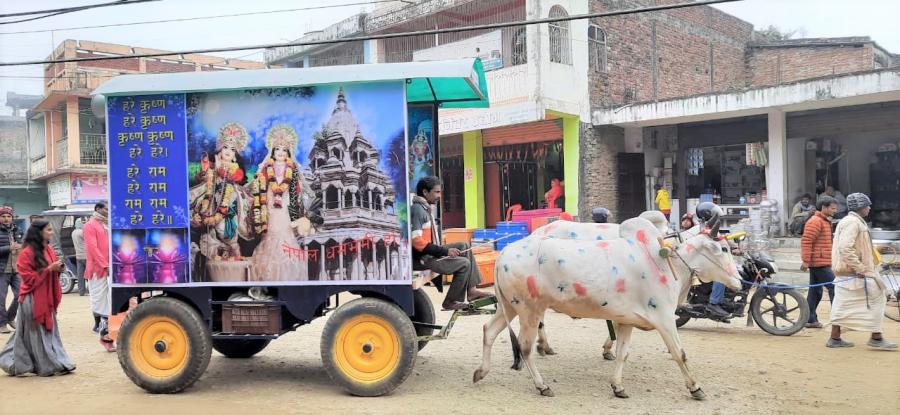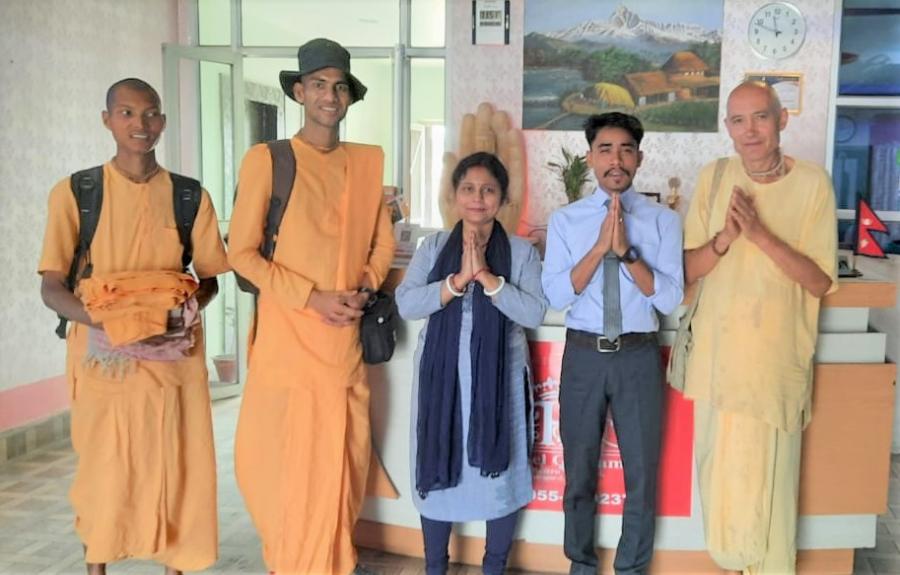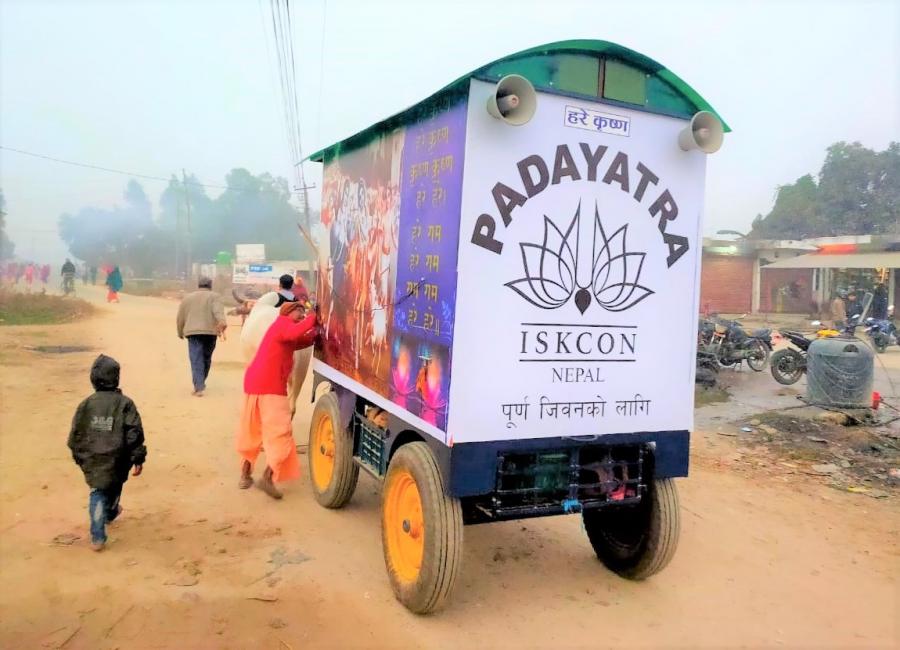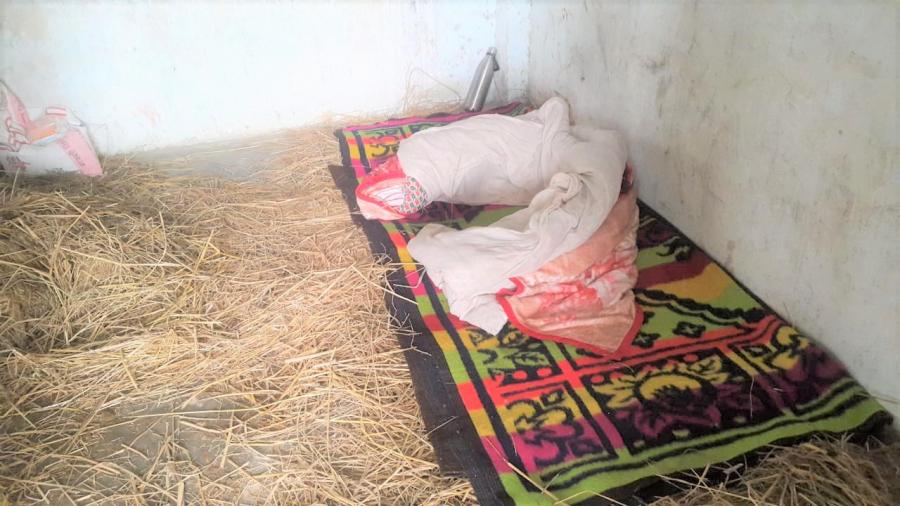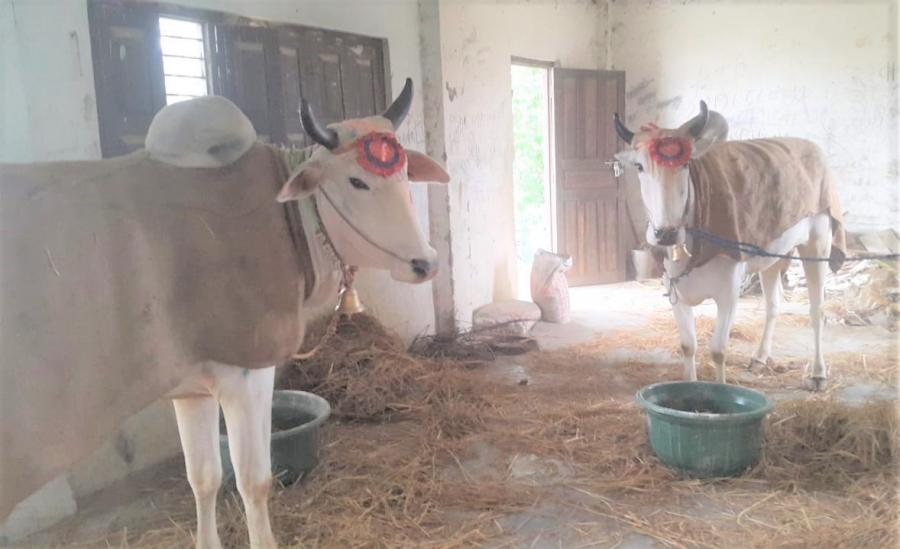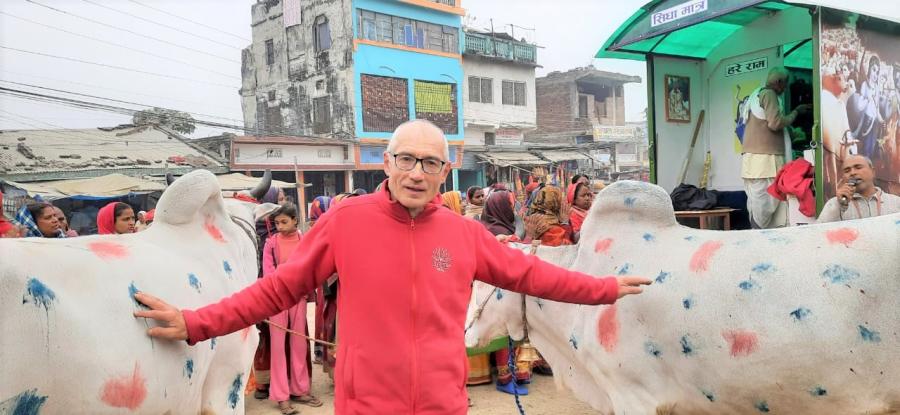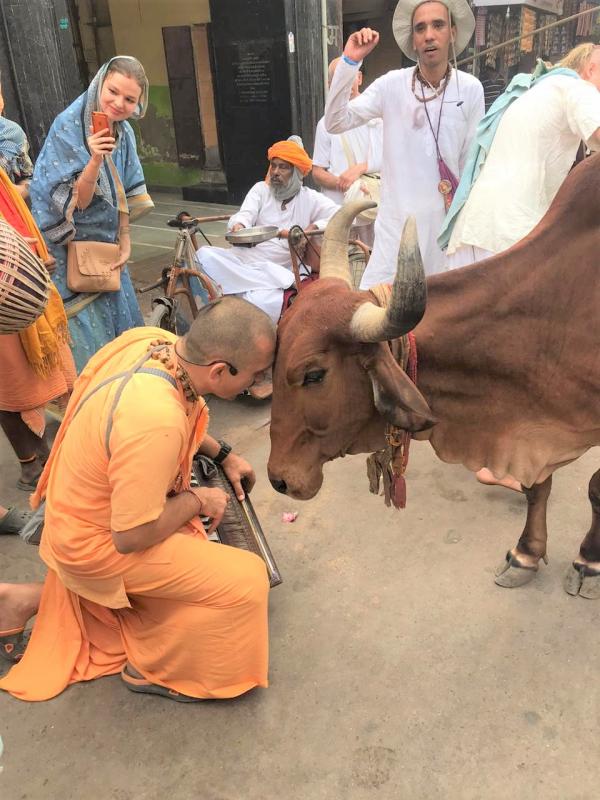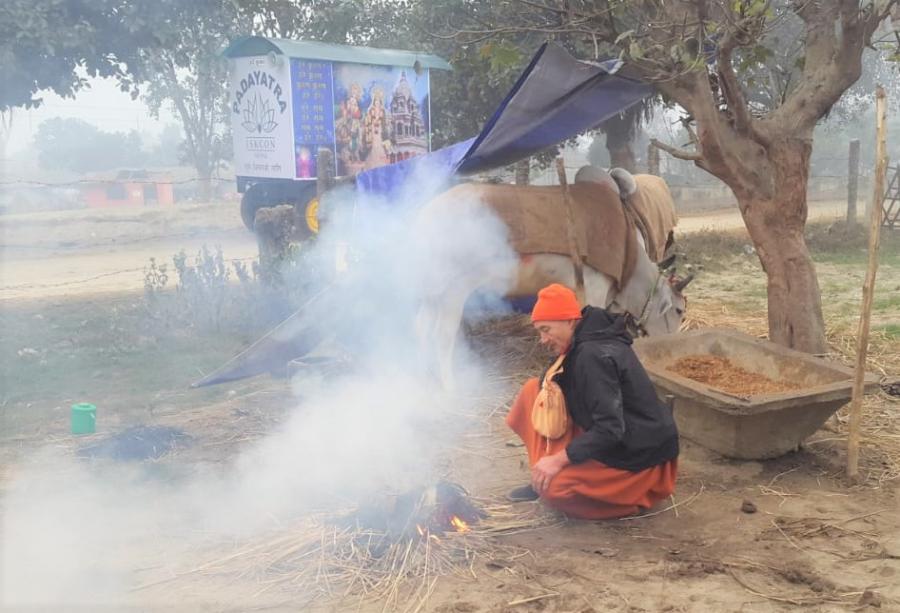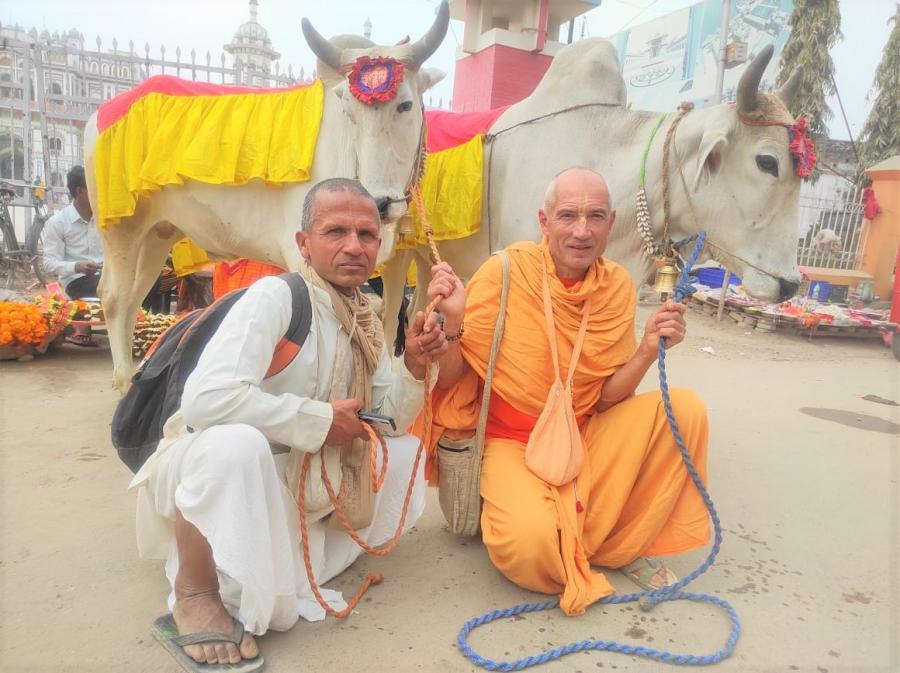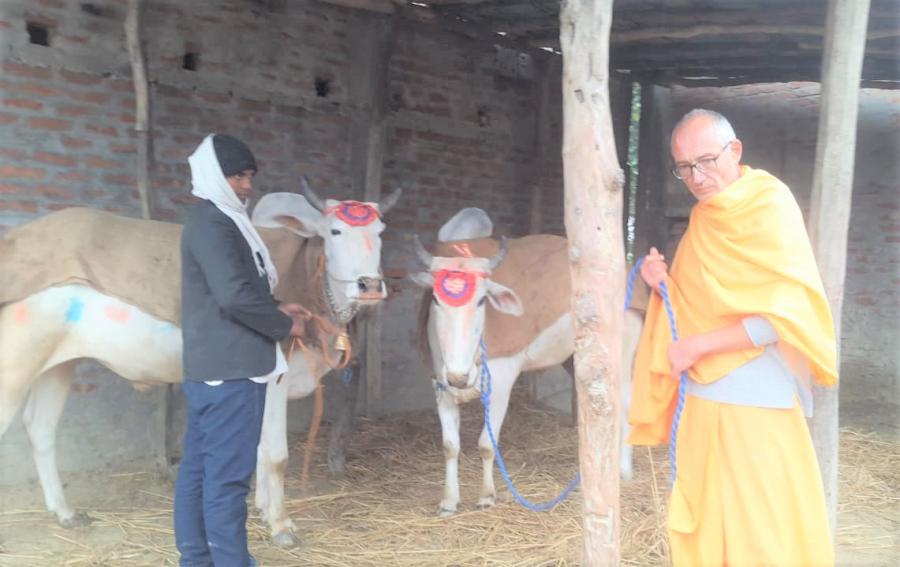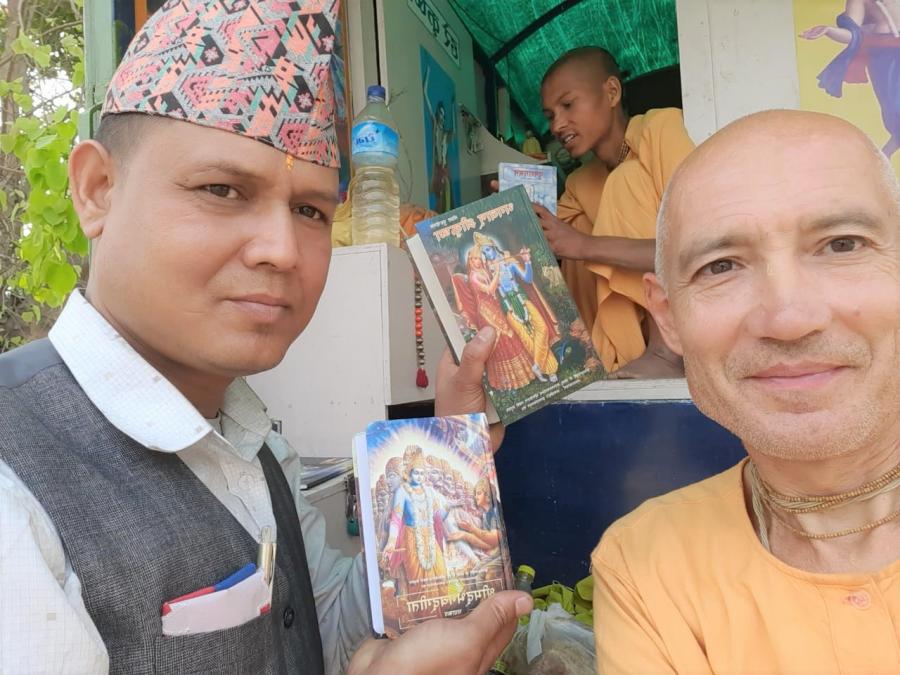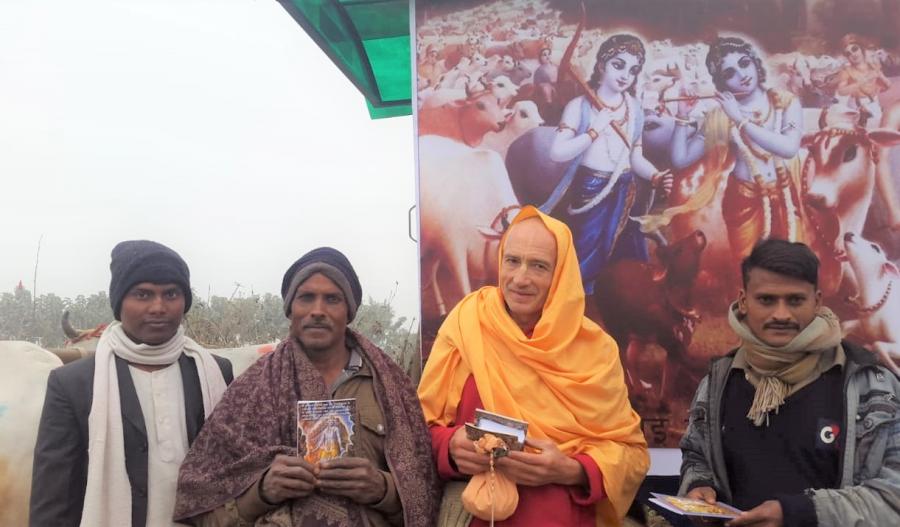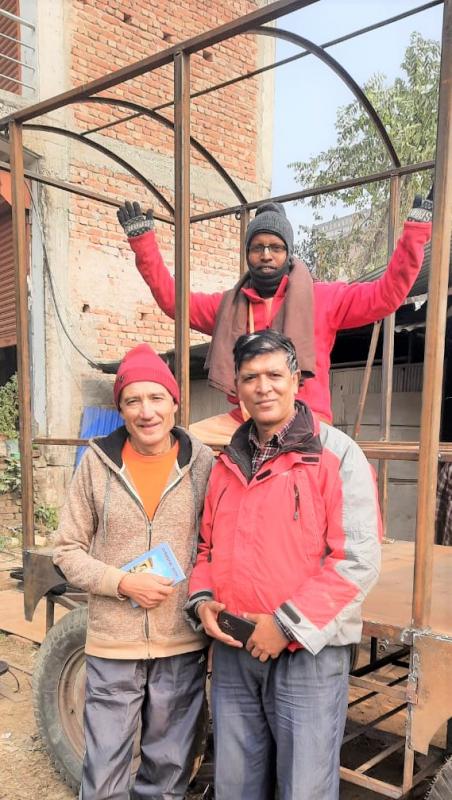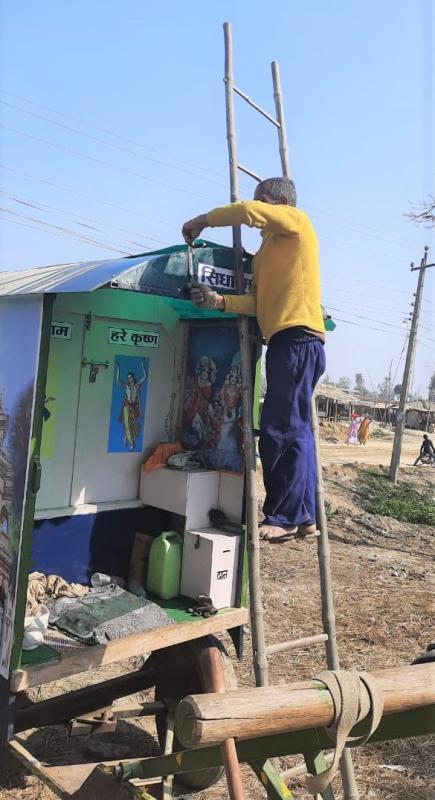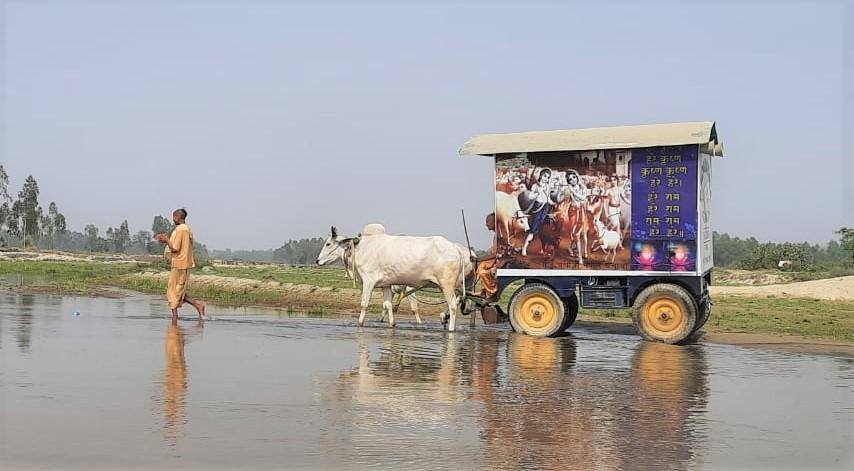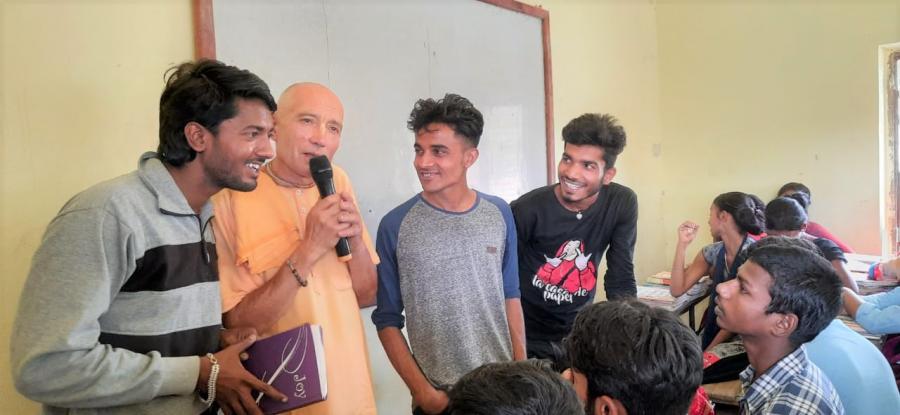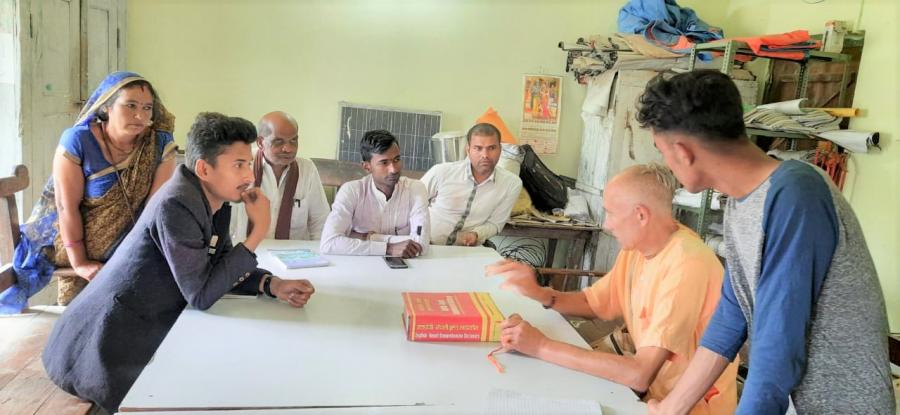By Sahasranam dasa, Padayatra Nepal leader
During the lockdown in the summer of 2020, I discussed with Nepal regional secretary Patri dasa the strategy of preaching in Nepal. He had been instructed by our spiritual master, Lokanath Maharaja, to organize a padayatra in Nepal. I felt inspired and Patri said, “You should take up this new opportunity for preaching in rural areas of Nepal.” We had neither experience nor devotees, only the desire to start which kept growing.
I had an idea to make a small two-wheel cart to be pulled by an ox, which could be taken on mountain roads. But later Kathmandu temple president Rupeswar dasa convinced me that in hilly country it would not be possible to use the cart. He recommended I go to Mirchaiya where there is an ISKCON centre.
Construction of the chariot
I reached Mirchaiya in south-eastern Nepal on October 15 where I talked with centre leader Sivapriya dasa who advised, “You concentrate on chariot construction and I will arrange the oxen.” I got some ideas from the Internet and suggestions made by Sanak Sanatan dasa from Vrindavan. I made a design and found a good engineer, Phanindra Niraula, but workers were slow to start and construction didn’t begin until two weeks later. By new year our chariot was almost ready. I bought two oxen and Padayatra Nepal was inaugurated on January 19, 2021.
Padayatra participants
Padayatra can become successful when people enthusiastically create a team for achieving the goal. To take devotees from other departments is an impossible task. To support padayatra a minimum of two devotees were needed. Fortunately, Krishna sent Premharinam dasa from Pune. He had no experience but an ambition to be in first with the Nepal Padayatra. A Mirchaiya family, Hari dasa and his wife and daughter Riya, took an active part by installing the sound system and lights and making flexes (banners) to go on the sides of the chariot. We bought maps of the Terai, the lowland region of southern Nepal, to define padayatra’s route. The plan was to cover 5-8km a day, then stay one to two days in a village for sankirtan and book distribution.
On January 20 Padayatra Nepal got under way. In the Mirchaiya bazar people gathered around our ratha, the oxen were decorated, puja was performed for the padayatra deities and with a group of local devotees we headed west towards the nearest village. The next morning, we did kirtan, presented a lecture, and the local devotees prepared a feast. They also donated a lot of fruit, mainly oranges and grapes, which we distributed along the way.
We felt freedom and excitement after the tension of three months of preparation. All day as we walked kirtan of the holy name poured from the sound system and when we stopped a crowd would form to ask about us and our activity. We gave the message of Krishna consciousness and offered the villagers Srila Prabhupada’s books. It was the first time most of them had seen devotees. People offered donations and many gave rice. On the upper part of the ratha we had written siddha matra – “only straight ahead” – meaning that our ratha cannot move backwards. But in the local language siddha matra means “only rice” and people thought that we eat only rice and that they should bring rice for us.
Sadhana, or daily routine, in padayatra starts early morning with servicing the oxen, then japa until arati at 7:30am and a short Bhagavatam class followed by prasadam. We then collect the luggage and prepare the ratha and oxen. We usually start walking between 10-11am and stop around 3-4pm depending on the distance and destination. We have no advance party so we need time to arrange and organize everything ourselves.
From the beginning we faced many difficulties. The oxen were not trained for our ratha and they stopped every 50-100m, although they moved better when someone walked in front of the ratha. When books were being distributed the oxen would stand still until it was time to start walking again. Most problematic was that our ratha had no braking system and when the road went downhill the ratha would speed up and push the oxen. They were scared in that situation and stopped or tried to come out from the yoke. More than once a week we had to take the oxen out, and with the help of people slowly pulling the ratha by hand about 50m ahead we would then yoke them again and continue walking. We had no opportunity to replace the wheels with ones including brakes and so went through such an exercise regularly.
One day was really difficult when the ratha ran off the road three times. The worst occasion happened on the flat, narrow road between villages. I was walking in front of the ratha when suddenly I heard a strange sound behind. When I looked back, I saw how moving along the side of the road one ox had slipped down into a field, then the ratha slipped leaving two wheels in the field and only one wheel touching the road. It was a shock. A small overbalance would flip the ratha on its side. With a long rope I secured the ratha to a tree on the opposite side of the road and we then waited for a tractor to come along. Fortunately, a group of schoolboys appeared and helped us drag the ratha back on to the road. The accident happened because the roof of the ratha was caught by the low branch of a tree which scared one of the oxen. After that incident we were all in stress, including the oxen, and I decided to seek a better standard of road even if it increased the distance. Luckily, we escaped a potentially serious situation and only a small repair was needed.
Such extreme situations were rare but tensions remained. To arrange for food preparation, a place for sleeping and food for the oxen occupied all evening, although cooking prasadam on the gas stove took much less time than with wood. Caring for the oxen was a major concern and they are the most important part of our team, the moving force of padayatra involved in preaching by their behaviour and their service to Their Lordships. Intense activities kept our mind and senses concentrated and we depended on Krishna’s mercy always. At the same time physical and mental exhaustion increased.
After two weeks Premharinam could not continue and left. Another devotee who had been with the All-India Padayatra for six months replaced him, but he left after only two days. He said that we were not well organized and the ratha was not suitable. Then came two devotees with whom I have had long experience of cooperative service, Sudarshan dasa and Yashodananda Kana dasa, and they have remained with padayatra.
Preaching
Padayatra has a unique opportunity for preaching. When devotees with a ratha and oxen come to a village people are attracted, eager to know where we are from and what we are doing. Children especially accept us and are ready to follow the maha mantra and kirtan. People would come from their houses and look at us in amazement, even when we were cooking and eating. Padayatra opens an abundance of preaching paths to all social groups, although Srila Prabhupada’s books are, of course, the basis of preaching.
In three months, Padayatra Nepal visited approximately forty villages as well as three cities: Mirchaiya, the mercantile centre formerly known as Ramnagar Mirchaiya where padayatra began; Janakpur dhama, the birthplace of Lord Rama’s consort Sita; and Jaleshwar, named after its prestigious Jaleshwarnath mahadev Lord Shiva temple. In the Terai most people are Rama devotees but nonetheless were favourable to us. We organized programmes at schools, local temples and houses and found everyone generally sympathetic and ready to cooperate with us.
Preaching is the life and soul of Krishna consciousness. To give Krishna to people we should give them ourselves – our time, energy and heart. The more energy we expend and the more difficulties we overcome, the more nectar we receive. In padayatra we had a lot of inconveniences with weather, roads, cooking and sleeping, however we continued to preach and distribute books and the holy name. We felt our padayatra offered some services to bring people closer to the Lord as well as Lord Chaitanya’s prediction that in every town and village people will sing the holy names.
All glories to Srila Prabhupada.

